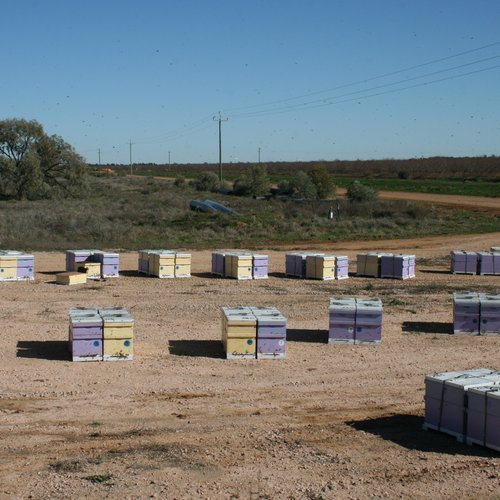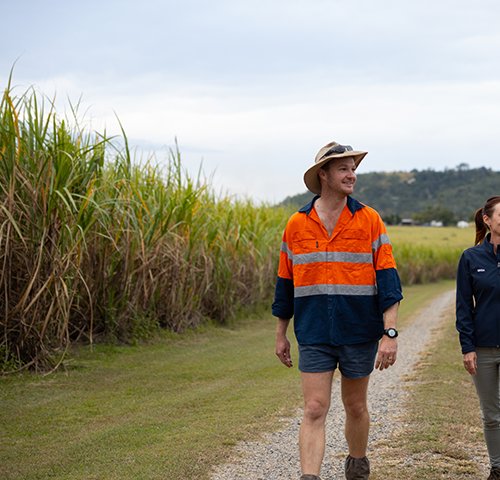A high prevalence of fall armyworm in Queensland earlier this year has been a steep learning curve for growers and agronomists, who are working hard to understand the pest’s impact in Australian farming systems.
Since arriving in early 2020, the damage caused by the highly destructive pest with a significant migratory capacity has been relatively limited.
However, that changed due to a ‘perfect storm’ of conditions in the past 12 months.
Nutrien Ag Solutions Clermont branch manager and senior agronomist Anthony Lee said a milder winter in 2023, followed by early pre-Christmas rain in central Queensland, meant a large amount of weed and pasture biomass favoured by the pest was present and resulted in a build-up of the population.
“On the back of that early break, a large sorghum crop went in and the fall armyworm really went for it in both forage and grain crops,” Mr Lee said.
“The early crop had a severe infestation of fall armyworm right up to flowering, then it tapered off over a couple of weeks and as the season turned dry they basically became non-existent.
“The later crop however seemed to have a lot less pressure than the early crop.”
Reported to attack more than 350 commercial and non-commercial plant hosts worldwide, fall armyworm’s behaviour in Australian conditions and how best to manage it, has been a significant area of research for scientists.
“Since the pest’s arrival in Australia, the advice has been to not grow corn in this climate.
“We’ve grown plenty of corn over the years, however it’s an opportunistic crop in this region and if the recent fall armyworm pressure in sorghum is anything to go by, I don't think corn would be an option for us.
“There’s now a lot of information coming together on how to manage corn to limit the damage of the pest, but part of the challenge for us over summer was there’s not a huge amount of information on sorghum.
“We’ve never had a huge amount of fall armyworm in sorghum and we’ve often been told sorghum isn’t one of their favoured crops to attack, so no one really knows the economic thresholds and the pressure points.”

Learning the pest
The many unknowns meant learning the pest through continual crop monitoring was key to management.
“What this season did show us is sorghum can withstand quite a bit of pressure.
“Some paddocks were completely chewed out, but they did regrow. Whether they had an economic loss or would have been worth anything, is harder to say.
“The sorghum plant is very persistent – it will continue to try to grow fruit, because that’s its job, and it’s got a very aggressive root system, so it will always try to continue reshooting,” Mr Lee said.
This persistence and ability to yield even after significant pest pressure was evident in the sorghum crop Dave Daniels grew on his property, Tarvellon, in the Kilcummin district.
Mr Daniels planted 1000ha in January and said fall armyworm affected a large area of the crop, with some parts decimated.
“In the past, we’ve had a little patch here and there and we’ve not worried too much about them, but this year they came in and did a lot of leaf damage, which frightened the hell out of us,” he said.
“We were told you can have a lot of leaf damage in sorghum and not get any yield reduction because the plant has a lot of extra leaf area than it needs. After looking at it, we decided not to treat the crop.”
In addition to one little shower of rain, which bucked the sorghum up and gave it more leaf Mr Daniel said they were lucky to only be affected by one generation of the pest population.
“They just came through and laid once, whereas I think if we’d gotten another laying, it would have been disastrous.
“In the end, I’d say we had very little yield reduction even though we had a lot of leaf problem.”
After a fast learning curve he said he’ll sit and look at them for a long time before making the decision to spray in future sorghum crops.
Management options and limiting resistance development
This measured approach to applying insecticide is one which Mr Lee believes will be widespread in coming years, due in part to the learnings of the recent crop, the pest’s behaviour and life cycle and its ability to tolerate many chemical groups.
“These guys will put an egg raft right down low on the underside of a leaf and the minute they hatch, the larvae will very quickly move to the leaf extremities and try to get caught on the wind to move away from the initial hatch, or they will start crawling immediately to the whorl of the sorghum plant because they don't like sunlight and are trying to avoid predation,” Mr Lee said.
“Once they're in that whorl, it is very, very difficult to control them.
“We also know they’ve come to Australia with quite a reasonable level of tolerance to a lot of our major forms of chemistry because they’ve already been exposed to them.
“Being accelerated through the tolerance to chemistry means we’re having to be really smart about our options.”
Like most crop pest management decisions Mr Lee said controlling fall armyworm will be influenced by temperature, stored soil moisture, soil nutrition and commodity prices.
“Going forward, I think more focus on the season leading up to the sorghum plant and our timing of planting will be important for managing the pest,” he said.
“We understand now if there’s a wet build-up and we’re planting early, we’re going to have increased pressure.
“We also know we can tolerate a bit more defoliation from the fall armyworm than we first thought as long as we’ve got moisture in the system.”
If the decision to apply insecticide is made Mr Lee said the key will be giving the chemistry every opportunity to work.
“This means the right droplet spectrum for the chemistry, ensuring our water rates are correct, and potentially some nighttime applications.
“Correct application is better than more chemistry, and we know one really well-timed spray can get us through in most cases, but the gross margin and return to the grower will be the dictating factor.”




